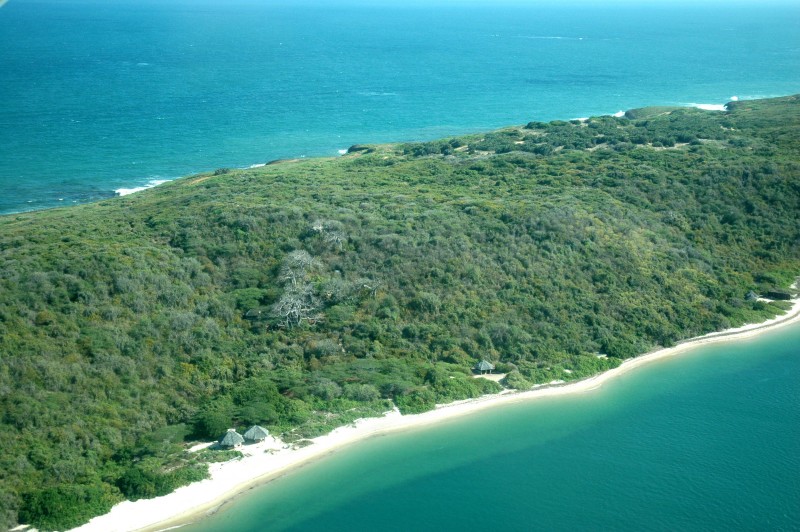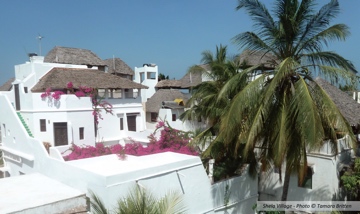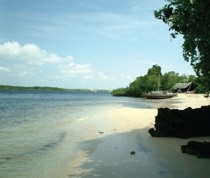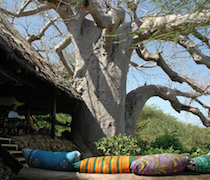Kiwayu - On Top of the Kenya Coast
I've been to Kiwayu Island in Kiunga Marine National Park many times, and I'll keep coming back. Being here refreshes the soul.

Kiunga Marine National Reserve stretches along the northernmost part of Kenya’s coast. The sparkling seas of the reserve are filled with extraordinary sea creatures whose vivid colours gleam in crystal clear waters. Sea grasses flutter in the tides, coral reefs shift and grow, and extensive mangrove forests provide homes for the rare and exotic creatures that live here.
The wealth of turtle species includes Sea Turtles, Leatherback and Olive Ridley. Arthropods include crabs, starfish, lobsters and sea urchins. Dolphins and the rare and endangered dugongs can sometimes be spotted here, while stately whale sharks traverse the waters between January and March; growing up to the size of six elephants, whale sharks were in the seas before the time of the dinosaurs.
These waters are dotted with around 50 islands and atolls. Many are uninhabited, and fishermen stop here to moor their boats, clean their catch and store their goods. Others are home to small communities who trade with the fishermen and lead a sheltered and secluded life. Kenya Wildlife Society patrol the waters ensuring there’s no commercial fishing, and the only fishing is done with traditional gear.
Situated amongst all this glory is Kiwayu. A narrow strip of land rising from the seas, Kiwayu has white beaches, winding mangroves and lush vegetation. With a length of 12km and a width of only half a kilometre, the island has one village, one school and one well. Its beaches are dotted with rock pools of scuttling crabs, and narrow creeks carve through the undergrowth.
Kiwayu can only be reached by boat. The nearest airport is Lamu Airport on Manda Island, from which speedboats reach Kiwayu in about 2 hours; the more leisurely dhows take at least six hours to cruise the distance, and can take a day or more, depending on the wind.
On arrival in Kiwayu, time appears to slow – or even stop. The serene atmosphere permeates all who come here and many spend their days simply gazing over the seas. However, for those who like to be more active, there are water sports galore. Scuba diving – best between October and March – opens up a beautiful underwater world; dive sites include a wreck, the creeks, and some vivid coral gardens, all teeming with multiple species of fish. Kite surfing can be done in the calmer waters of the creeks or out on the open seas. Boogie boarding and kayaking give the chance to play on the waves. Snorkelling reveals the clarity of the water and the proximity of the colourful fish. Sports fishing, fly fishing, creek fishing and deep sea fishing are all on offer. Day trips by speedboat or dhow can stop off at empty beaches, coral caves and uninhabited islands. And nothing beats a day spent strolling along the gleaming white beaches, pausing occasionally to cool off in the glistening sea.
Fact file
· Kiunga Marine National Reserve was gazetted in 1967.
· The reserve is managed by the Kenya Wildlife Service and has an area of approximately 270km2.
· Kiunga Marine Conservancy was established by the Northern Rangelands Trust in 2013.
· The conservancy is a community-based organisation aiming to boost the local economy, empower women and youth, protect flora and fauna, and manage fishing sustainably.
· The Lamu Archipelago is a chain of about 50 islands and coral reefs.
Tamara Britten, 19 December 2019
Published also in: Travelog Magazine: The Standard
About the region
Lamu

Made up of a collection of idyllic islands at the northern end of Kenya’s coastline, the Lamu Archipelago is living history. The Old Town’s narrow alleys, Arabic architecture, fort and mosques speak of age old culture, while the surrounding beaches and reefs sparkle in today’s sunshine.
Read more about LamuWhere to stay
Mike’s Camp, previously known as Munira Island Camp, is on the beautiful and remote Kiwayu Island. It opened in 1992, and has remained since then in the hands of Mike Kennedy, who still hosts the camp personally. There are 7 en-suite thatched bandas, made up of 6 ...
The idyllic island of Kiwayu is the only place visitors can stay in the Kiunga Marine National Reserve. Stretching along the northernmost part of Kenya’s coastline, Kiunga Marine National Reserve has sparkling seas filled with extraordinary sea creatures whose vivid colours gleam in crystal ...

